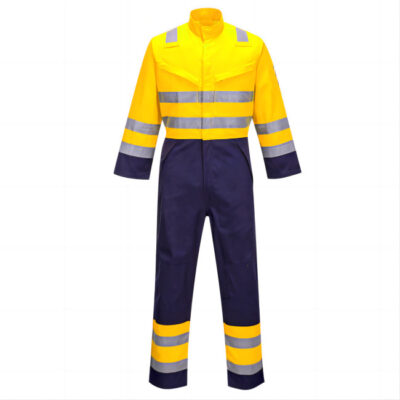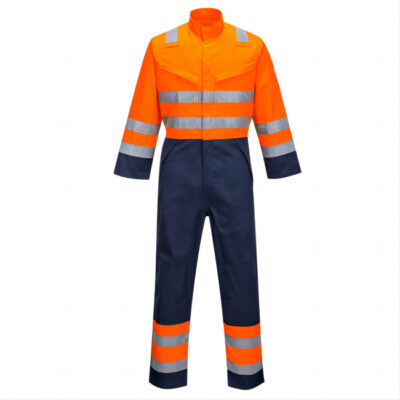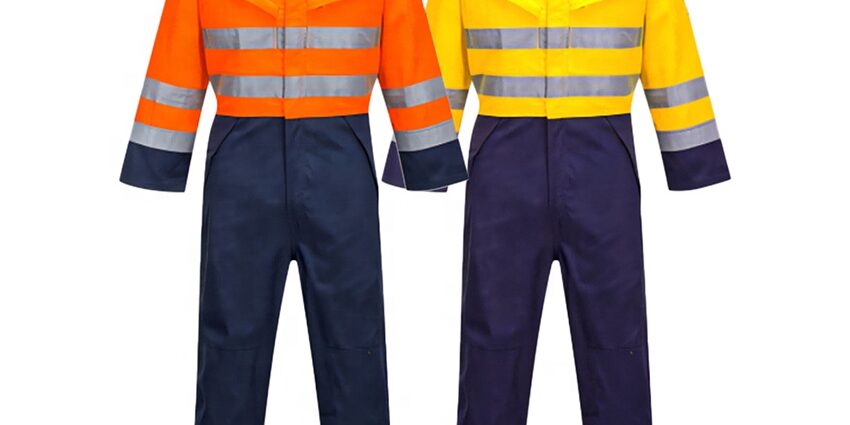Coveralls vs. Overalls: Selecting the Right Garment for Each Industry
Introduction: Why the Distinction Matters
In procurement, the terms coveralls and overalls are often used interchangeably. However, these garments serve distinct functions and suit different industries. For safety officers and buyers, choosing between the two is more than a vocabulary decision—it affects worker protection, comfort, and total cost of ownership.
This article explores the differences between coveralls and overalls, highlighting where each is best applied in industrial and corporate settings.
👷 What Are Coveralls?
Coveralls are one-piece garments that cover the torso, arms, and legs, providing full-body protection.
Advantages of Coveralls:
-
🛡️ Comprehensive Protection: No gaps between top and bottom, making them ideal for hazardous environments.
-
🔥 Enhanced Safety Options: Can be flame-resistant, chemical-resistant, or arc-rated.
-
👌 Professional Uniformity: Presents a consistent, polished image across teams.
Limitations:
-
🌡️ Can be hot and less breathable in warm climates.
-
⏱️ Less convenient for quick breaks or garment changes.
Industries that rely on coveralls include oil & gas, construction, automotive workshops, and utilities, where exposure risks are high.
👖 What Are Overalls?
Overalls, sometimes called bib-and-brace garments, are sleeveless trousers with an extended chest panel held up by straps. They are designed to be worn over regular clothing.
Advantages of Overalls:
-
🌬️ Better Ventilation: Sleeveless design keeps workers cooler.
-
🛠️ Layering Flexibility: Easy to combine with shirts, jackets, or sweatshirts.
-
💵 Cost-Effective: Generally cheaper and easier to replace than full coveralls.
Limitations:
-
🚫 Less protective coverage, leaving arms and torso exposed.
-
🚫 May not meet high-risk industry safety requirements.
Overalls are well-suited for light manufacturing, warehousing, farming, and logistics, where workers need freedom of movement and minimal protective coverage.
📊 Side-by-Side Comparison
| Feature | Coveralls | Overalls |
|---|---|---|
| Coverage | Full-body (arms, torso, legs) | Torso (partial), legs only |
| Protection Level | ⭐⭐⭐⭐⭐ High | ⭐⭐ Moderate |
| Comfort in Heat | ⭐⭐ Moderate | ⭐⭐⭐⭐ Cooler |
| Typical Cost | Higher investment | Lower investment |
| Ideal Industries | Oil & Gas, Utilities, Heavy Industry | Logistics, Farming, Warehousing |
🔑 Choosing the Right Garment by Industry
Procurement managers should align garment choice with specific workplace risks and environmental factors:
-
🛢️ Oil & Gas: Flame-resistant coveralls with sealed seams.
-
🏗️ Construction: Coveralls for welding and concrete work; overalls for general labor.
-
🚚 Logistics & Warehousing: Overalls paired with T-shirts or polos for mobility.
-
🌾 Agriculture: Overalls for farm work, offering protection without overheating.
By segmenting garment supply based on industry needs, companies can achieve better safety compliance and worker satisfaction.
🌐 Partnering with Trusted Suppliers
Both garments require high-quality manufacturing for durability and compliance. For multi-category sourcing, Workwear Manufacturers provide expertise across all protective clothing lines.
For full-body solutions in hazardous industries, specialized Coveralls Manufacturers deliver certified garments tailored to your workforce requirements.
Conclusion: Matching Function to Environment
The debate of coveralls vs. overalls is not about which is “better” overall—it’s about which is fit-for-purpose.
🔎 Choose coveralls when safety risks demand maximum protection.
🔎 Choose overalls when flexibility, ventilation, and cost savings matter more.
By making industry-specific sourcing decisions, procurement teams can maximize both worker safety and budget efficiency, ensuring every garment investment delivers measurable value.





















